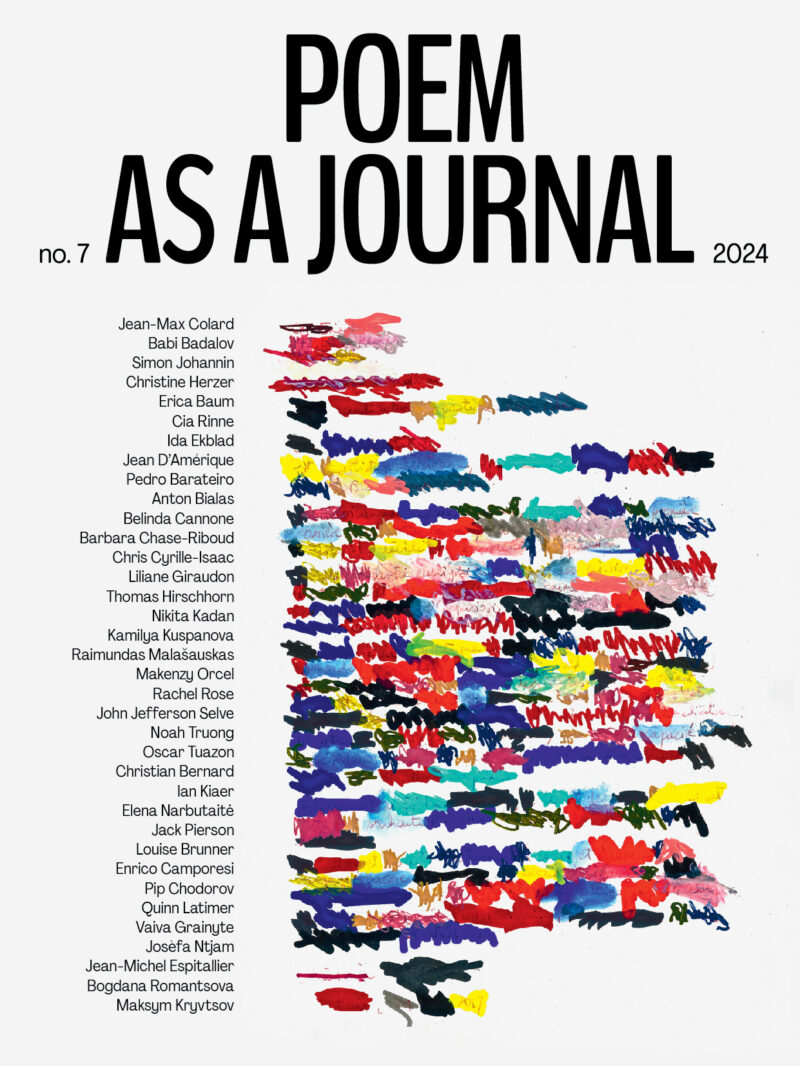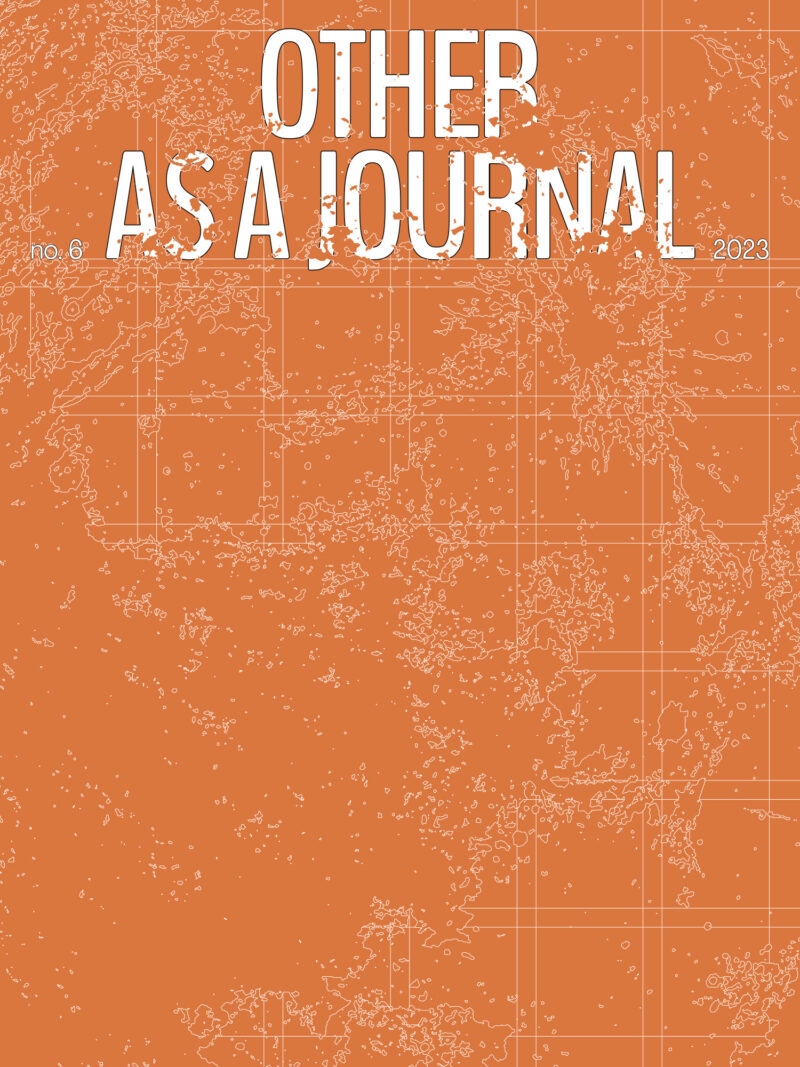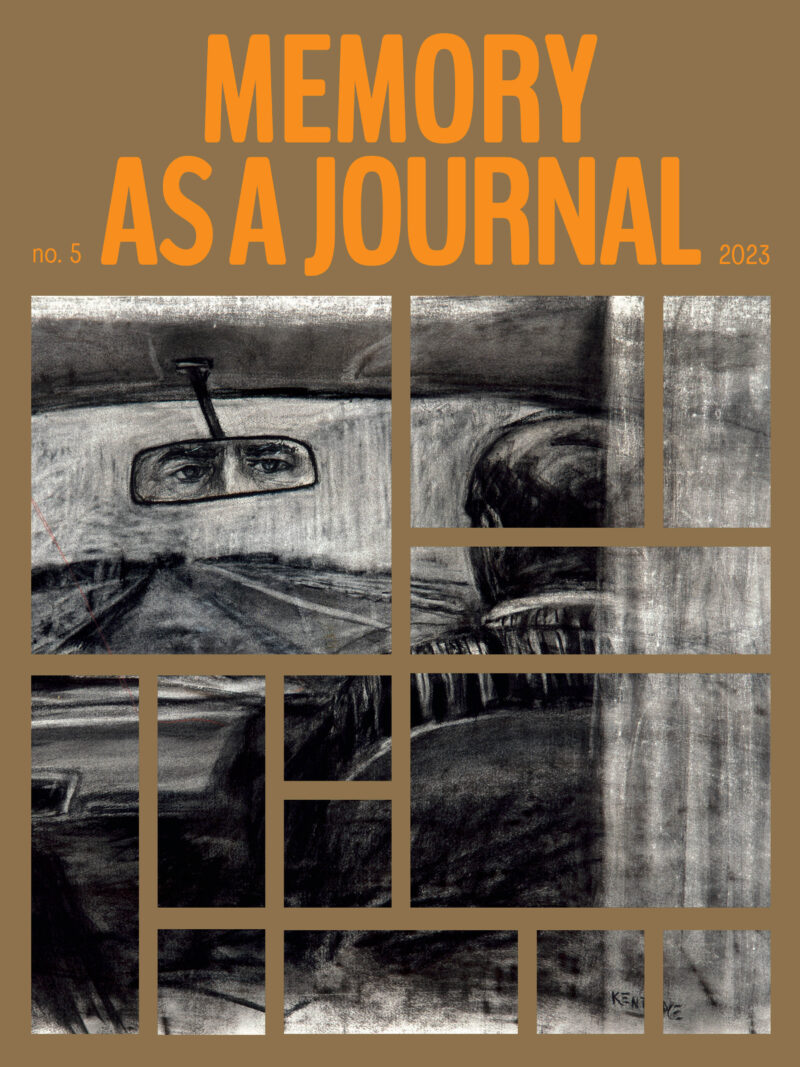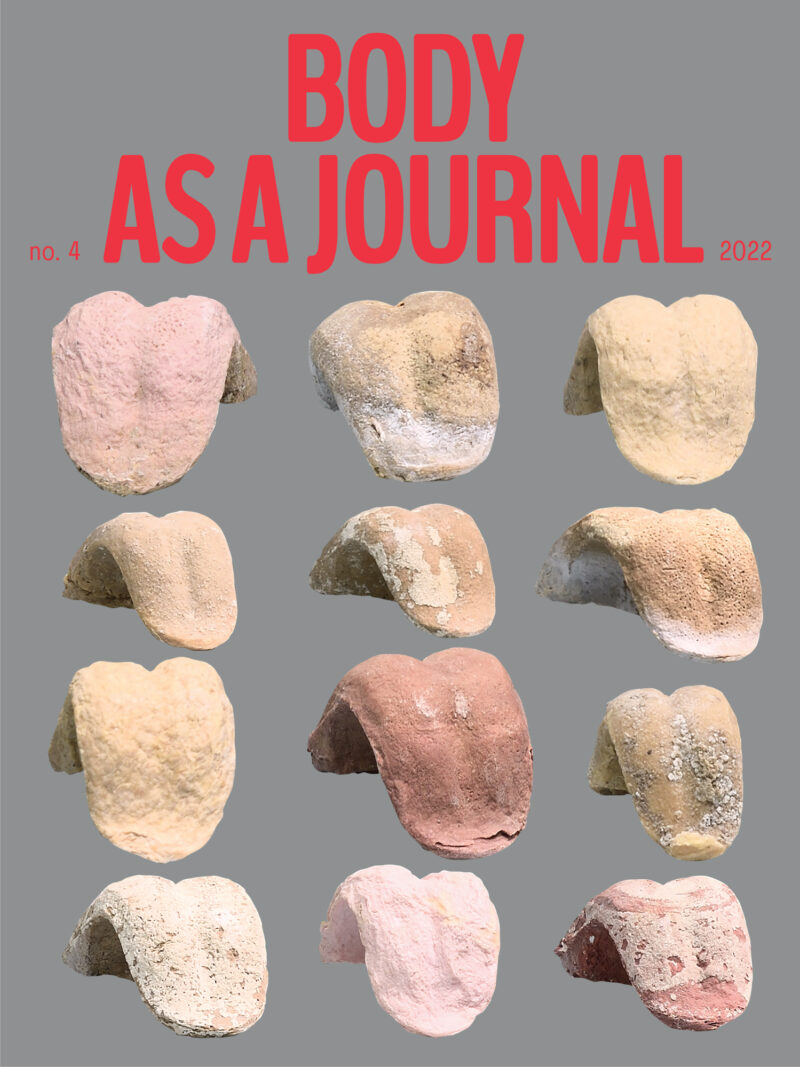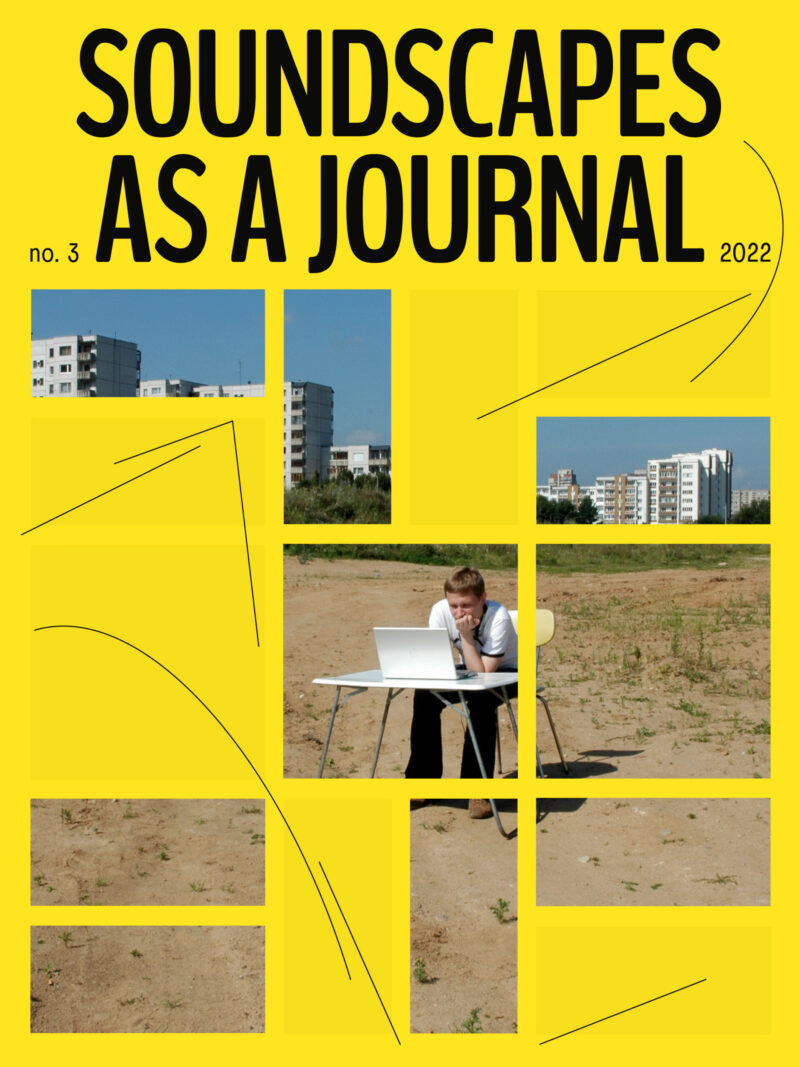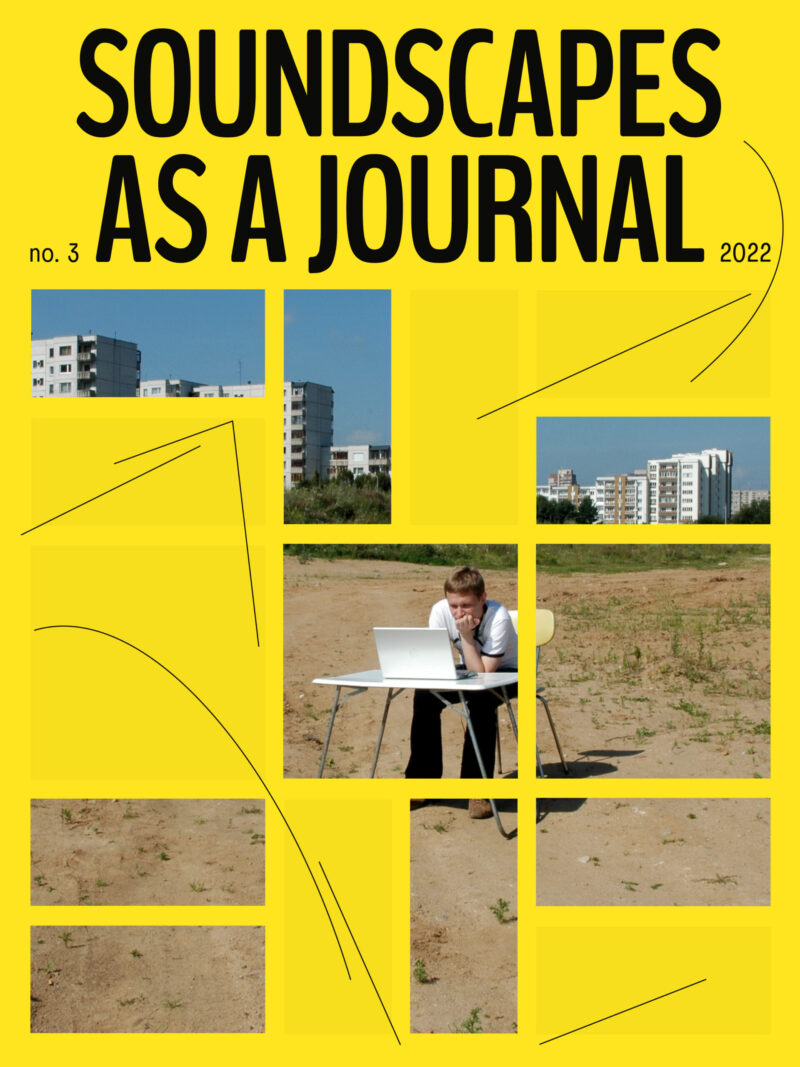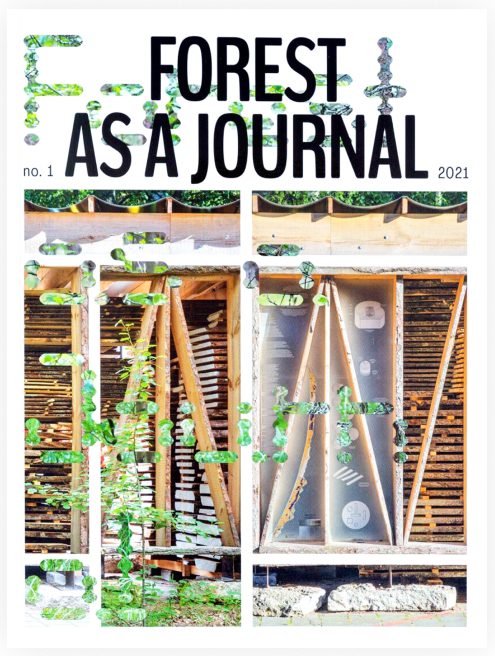Disabled shop
Showing 1–16 of 18 results

Escape as a Journal (.pdf)
Issue No. 8, Autumn/Winter 2024€0.00Guest Editor Edvardas Šumila
Editor Kotryna Lingienė
English Language Editor Gemma Lloyd
Issue Design Vytautas VolbekasGuest edited by philosopher, writer and curator Edvardas Šumila, ESCAPE delves into various artistic and discursive histories and awaken our esoteric curiosity. While moving toward a critical take on spirtuality, it attempts to personalise the seemingly institutionalised. Staring at the black sun that belonged to one of Stravinsky's, never to be found again, we will imagine scores that were perhaps only dreamed and never composed.He never heard his poems played; we mean M. K. Čiurlionis.Guest edited by philosopher, writer and curator Edvardas Šumila, ESCAPE delves into various artistic and discursive histories and awaken our esoteric curiosity. While moving toward a critical take on spirtuality, it attempts to personalise the seemingly institutionalised. Staring at the black sun that belonged to one of Stravinsky's, never to be found again, we will imagine scores that were perhaps only dreamed and never composed.He never heard his poems played; we mean M. K. Čiurlionis.[ Close Table of Contents ] Close Table of ContentsEditorial
Edvardas ŠumilaIlluminating Oneself by the Immense
Dmitri NikulinFragments of Čiurlionis
Šarūnas NakasHallucinating Čiurlionis
Goda PalekaitėAnother Hundred Years
A conversation between Asta Vaičiulytė and Donatas Jankauskas-DuonisFrom Tarkovsky to AI: On the Evolving Resonance of Solaris
Lukas Brasiskis interviews Deimantas NarkevičiusThe Sun is God. On the Naturalism of M. K. Čiurlionis
Ben EasthamTwo Fragments and an Imaginal Journey
Chiara BotticiPersonal Reminiscences through Jonas Mekas and M. K. Čiurlionis
Yumiko NunokawaVocal Notes for Labouring Worlds
Valentinas KlimašauskasBios
Sonata of the Sea (Finale, Surf Edition)
Tomas Terekas
Vessel as a Journal
Issue No. 9, Spring/Summer 2025€15.00Guest Editor Defne Ayas
Editor Kotryna Lingienė
English Language Editor Gemma Lloyd
Issue Design Inga Navickaitė-DrąsutėThe ninth edition, curated by Defne Ayas (Curator-at-Large at New York's PERFORMA and the new director of Van Abbemuseum in Eindhoven) explores the relationship between art, reality and performance – how performance shapes our understanding of politics and vice versa. It also addresses questions of desire, selfhood, and camouflage in twenty-first century, examining the convergence of encryption with fashion, sonic experiences and love. Ultimately, this issue questions how artists connect with each other in the face of tides of annihilation, diving into the heart of artistic thinking and its manifestation on stage under the lights.The ninth edition, curated by Defne Ayas (Curator-at-Large at New York's PERFORMA and the new director of Van Abbemuseum in Eindhoven) explores the relationship between art, reality and performance – how performance shapes our understanding of politics and vice versa. It also addresses questions of desire, selfhood, and camouflage in twenty-first century, examining the convergence of encryption with fashion, sonic experiences and love. Ultimately, this issue questions how artists connect with each other in the face of tides of annihilation, diving into the heart of artistic thinking and its manifestation on stage under the lights.[ Close Table of Contents ] Close Table of ContentsEditorial
Dwellers of the Vessel: Bodies Over Binaries
Defne AyasI. PROTO-VESSEL
Cao Fei
Trajal Harrell
Gabriel Leister
Florentina HolzingerAncestors: Valentine de Saint-Point
Dance/War/Politics. Valentine de Saint-Point’s ‘Feminine Action’ confronts the world’s critical hotspots and the history of civilisations
Adrien SinaIndividualism and Fraternity
Valentine de Saint-PointII. AVATAR: AGENTS OF EMBODIMENT
Oh, Mindaugas
Tom EngelsField Manual For Experimental Intimacy and Semantic Derangement: Relational Stalinism 11:11
Michael PortnoyPresence Machines
A conversation with Vaidas JauniškisFrom Algae to Algorithms: Constructing Futures
A conversation with Ayong KimWhere The River Dreamed a Shape
Questions for Emilija Škarnulytė and Adam KleinmanThe Gravity of Collapse
Questions for Pakui Hardware and Job PistonGöksu Kunak: Bodies Beyond Simulation
Léon KruijswijkIII. CEREMONY: RITUAL SYSTEMS
The Future Is Already Dancing
Kira NovaEvery Body Knows
A conversation with Moriah Evans and Kathy NobleTimeline of Dance and Protest
Crack Nerve Boogie Swerve
Alexis BlakeAugustas Serapinas: Aerobics of Display
Questions for Neringa BumblienėRaimundas Malašauskas: The Spiral Remembers

Escape as a Journal
Issue No. 8, Autumn/Winter 2024€15.00Guest Editor Edvardas Šumila
Editor Kotryna Lingienė
English Language Editor Gemma Lloyd
Issue Design Vytautas Volbekas
Guest edited by philosopher, writer and curator Edvardas Šumila, ESCAPE delves into various artistic and discursive histories and awaken our esoteric curiosity. While moving toward a critical take on spirtuality, it attempts to personalise the seemingly institutionalised. Staring at the black sun that belonged to one of Stravinsky's, never to be found again, we will imagine scores that were perhaps only dreamed and never composed.He never heard his poems played; we mean M. K. Čiurlionis.Guest edited by philosopher, writer and curator Edvardas Šumila, ESCAPE delves into various artistic and discursive histories and awaken our esoteric curiosity. While moving toward a critical take on spirtuality, it attempts to personalise the seemingly institutionalised. Staring at the black sun that belonged to one of Stravinsky's, never to be found again, we will imagine scores that were perhaps only dreamed and never composed.He never heard his poems played; we mean M. K. Čiurlionis.[ Close Table of Contents ] Close Table of ContentsEditorial
Edvardas ŠumilaIlluminating Oneself by the Immense
Dmitri NikulinFragments of Čiurlionis
Šarūnas NakasHallucinating Čiurlionis
Goda PalekaitėAnother Hundred Years
A conversation between Asta Vaičiulytė and Donatas Jankauskas-DuonisFrom Tarkovsky to AI: On the Evolving Resonance of Solaris
Lukas Brasiskis interviews Deimantas NarkevičiusThe Sun is God. On the Naturalism of M. K. Čiurlionis
Ben EasthamTwo Fragments and an Imaginal Journey
Chiara BotticiPersonal Reminiscences through Jonas Mekas and M. K. Čiurlionis
Yumiko NunokawaVocal Notes for Labouring Worlds
Valentinas KlimašauskasBios
Sonata of the Sea (Finale, Surf Edition)
Tomas Terekas
Poem as a Journal (.pdf)
Issue No. 7, Spring/Summer 2024€0.00Guest Editor Jean-Max Colard
Editor Kotryna Lingienė, Louise Brunner
English Language Editor Gemma Lloyd
Issue Design Miglė Rudaitytė-Černiauskienė, Vita PaulinėThe seventh edition is guest edited by the art critic, curator, literator, and dreamer Jean-Max Colard from Centre Pompidou in Paris. This issue is as a kind of inquiry into the place that poetry occupies today in contemporary creation, and more broadly in our lives. Jean-Max is struck by the presence of poetry, particularly among the younger generation, on social networks, and especially in the art world. With his collaborator Louise Brunner, they played with the title of the magazine to compare the poem form with other fields: poem as a journal, as a movie, as an exhibition, as sex, as itself, but not as war.The seventh edition is guest edited by the art critic, curator, literator, and dreamer Jean-Max Colard from Centre Pompidou in Paris. This issue is as a kind of inquiry into the place that poetry occupies today in contemporary creation, and more broadly in our lives. Jean-Max is struck by the presence of poetry, particularly among the younger generation, on social networks, and especially in the art world. With his collaborator Louise Brunner, they played with the title of the magazine to compare the poem form with other fields: poem as a journal, as a movie, as an exhibition, as sex, as itself, but not as war.[ Close Table of Contents ] Close Table of ContentsEditorial
Jean-Max ColardJOURNAL AS A POEM
Journal of a Xenopoet
Babi BadalovPOEM AS A DIARY
december
Simon Johaninalive: writing, time, world
Christine HerzerPOEM AS A POEM
Dog ears
Erica Baumnotes on poetry
Cia RinneFEBERDIKT
Ida EkdbladPOEM AS?
What is Poetry for You Today?
Jean D’Amérique, Pedro Barateiro, Anton Bialas, Belinda Cannone, Barbara Chase-Riboud, Chris Cyrille-Isaac, Liliane Giraudon, Thomas Hirschhorn, Simon Johannin, Nikita Kadan, Ian Kiaer, Kamilya Kuspanova, Quinn Latimer, Raimundas Malašauskas, Elena Narbutaitė, Makenzy Orcel, Rachel Rose, John Jefferson Selve, Noah Truong, Oscar Tuazon.
EXHIBITION AS A POEM
Fragments: poems
Ian KiaerWe are not here to make do with what exists. (Adventures of an exhibition)
Christian BernardFacts and Words
Elena NarbutaitėSEX AS A POEM
On Tracey Emin: ‘Everything Has Come Through Me’
Louise BrunnerI ♥ Jack Pierson
FILM AS A POEM
Metres
Enrico CamporesiJonas Mekas as a Poet
Pip ChodorovEARTH AS A POEM
A Constellation of Blackness
Josèfa NtjamThe Poet II
Quinn LatimerDoes of the Granddaughter: I wish Two Kidneys Upon Thee
Vaiva GrainytėWAR NOT AS A POEM
The War
Jean-Michel EspitallierOn Maxym Kryvtsov, a Poet at War
Bogdana Romantsova
Other as a Journal (.pdf)
Issue No. 6, Autumn/Winter 2023€0.00Guest Editor Viktoras Bachmetjevas
Editor Kotryna Lingienė
English Language Editor Gemma Lloyd
Issue Design Jurgis GriškevičiusThe issue explores the origins of otherness as a counterpoint to identity and will reflect on various meanings of Other: the other person as a source of moral responsibility in moral philosophy, the other as a threat in migration politics, the other as a non-human being (animal, but also alien), the other within the human body – both as an organism (viruses, bacteria, etc.) and a voice (demons, conscience, etc.). The issue’s guest editor Viktoras Bachmetjevas is a philosopher with an interest in ethics, and specifically the thoughts of Emmanuel Lévinas and Søren Kierkegaard.The issue explores the origins of otherness as a counterpoint to identity and will reflect on various meanings of Other: the other person as a source of moral responsibility in moral philosophy, the other as a threat in migration politics, the other as a non-human being (animal, but also alien), the other within the human body – both as an organism (viruses, bacteria, etc.) and a voice (demons, conscience, etc.). The issue’s guest editor Viktoras Bachmetjevas is a philosopher with an interest in ethics, and specifically the thoughts of Emmanuel Lévinas and Søren Kierkegaard.[ Close Table of Contents ] Close Table of ContentsEditorial
Viktoras BachmetjevasMyself as the Other: Schutz and Gurwitsch on Strangers, Refugees and Homecomers
Saulius GeniušasThe Unintentional (Therefore, Even Sadder) Increased of Othering of the Other in Paris is Burning
Genna RivieccioProducing the Unsayable: On the Future of the Love of Language
Clayton BohnetThe Others of Emmanuel Levinas
Viktoras BachmetjevasMe, My Hearing Aid, and the Audio World
Žygimantas MenčenkovasToward Xenopolis
Krzysztof CzyżewskiOtherness and Ontology of Luck Among Animist People
Donatas BrandišauskasThe Angelology Professor (A Short Story)
Gintaras BeresnevičiusAnd How Does the Fungus Feel About This?
Kotryna Lingienė talks to Šarūnas PetrauskasI See Them Passing By
Artūras MorozovasThe Resurrected Wife
An anonymous, early twentieth-century story written in Azeri Turkish, translated and commented by David Selim SayersWelcoming the Unknown
David F. Hoinski
Poem as a Journal
Issue No. 7, Spring/Summer 2024€15.00Guest Editor Jean Max-Colard
Editor Kotryna Lingienė, Louise Brunner
English Language Editor Gemma Lloyd
Issue Design Miglė Rudaitytė-Černiauskienė, Vita Paulinė
The seventh edition is guest edited by the art critic, curator, literator, and dreamer Jean-Max Colard from Centre Pompidou in Paris. This issue is as a kind of inquiry into the place that poetry occupies today in contemporary creation, and more broadly in our lives. Jean-Max is struck by the presence of poetry, particularly among the younger generation, on social networks, and especially in the art world. With his collaborator Louise Brunner, they played with the title of the magazine to compare the poem form with other fields: poem as a journal, as a movie, as an exhibition, as sex, as itself, but not as war.The seventh edition is guest edited by the art critic, curator, literator, and dreamer Jean-Max Colard from Centre Pompidou in Paris. This issue is as a kind of inquiry into the place that poetry occupies today in contemporary creation, and more broadly in our lives. Jean-Max is struck by the presence of poetry, particularly among the younger generation, on social networks, and especially in the art world. With his collaborator Louise Brunner, they played with the title of the magazine to compare the poem form with other fields: poem as a journal, as a movie, as an exhibition, as sex, as itself, but not as war.[ Close Table of Contents ] Close Table of ContentsEditorial
Jean-Max ColardJOURNAL AS A POEM
Journal of a Xenopoet
Babi BadalovPOEM AS A DIARY
december
Simon Johaninalive: writing, time, world
Christine HerzerPOEM AS A POEM
Dog ears
Erica Baumnotes on poetry
Cia RinneFEBERDIKT
Ida EkdbladPOEM AS?
What is Poetry for You Today?
Jean D’Amérique, Pedro Barateiro, Anton Bialas, Belinda Cannone, Barbara Chase-Riboud, Chris Cyrille-Isaac, Liliane Giraudon, Thomas Hirschhorn, Simon Johannin, Nikita Kadan, Ian Kiaer, Kamilya Kuspanova, Quinn Latimer, Raimundas Malašauskas, Elena Narbutaitė, Makenzy Orcel, Rachel Rose, John Jefferson Selve, Noah Truong, Oscar Tuazon.
EXHIBITION AS A POEM
Fragments: poems
Ian KiaerWe are not here to make do with what exists. (Adventures of an exhibition)
Christian BernardFacts and Words
Elena NarbutaitėSEX AS A POEM
On Tracey Emin: ‘Everything Has Come Through Me’
Louise BrunnerI ♥ Jack Pierson
FILM AS A POEM
Metres
Enrico CamporesiJonas Mekas as a Poet
Pip ChodorovEARTH AS A POEM
A Constellation of Blackness
Josèfa NtjamThe Poet II
Quinn LatimerDoes of the Granddaughter: I wish Two Kidneys Upon Thee
Vaiva GrainytėWAR NOT AS A POEM
The War
Jean-Michel EspitallierOn Maxym Kryvtsov, a Poet at War
Bogdana Romantsova
Memory as a Journal (.pdf)
Issue No. 5, Spring/Summer 2023€0.00Guest Editor Daiva Price
Editor Kotryna Lingienė
English Language Editor Gemma Lloyd
Issue Design Kristina Alijošiūtė
We live in a world of 'memory wars'. A world in which there is a constant struggle for the right to remember, for the right to one's history, to one's memories, to one's identity. The guest editor of this issue is art historian and curator Dr. Daiva Price. In Memory as a Journal the curator asks: how do we talk about history when the present is in competition with the past? How can we talk about Second World War when the War in Ukraine is happening now? How should we remember when memory is traumatic?We live in a world of 'memory wars'. A world in which there is a constant struggle for the right to remember, for the right to one's history, to one's memories, to one's identity. The guest editor of this issue is art historian and curator Dr. Daiva Price. In Memory as a Journal the curator asks: how do we talk about history when the present is in competition with the past? How can we talk about Second World War when the War in Ukraine is happening now? How should we remember when memory is traumatic?[ Close Table of Contents ] Close Table of ContentsEditorial. Memory in the Shadow of Crumbling Empires
Daiva PriceCompeting Memories
Memory Against the National Grain
Prof. James E. YoungA Week in August
Manca Bajec, drawings by Vesta Kroese‘… Without Being Able to Remember, They Cannot Heal.’
Linara DovydaitytėDrawings
Mindaugas Lukošaitis‘(1944-1991’)
Indrė ŠerpytytėMemory in the Clash of Past and Present
Balancing History in the Course of Time
Robert van VorenRemembering so as to Forget
Kotryna Lingienė talks with Mindaugas LukošaitisMemory as Trauma
On Traumatic Memory and its Consequenses
Daiva Price talks with Prof. Danutė Gailienė and Robert van VorenReverse Memory Engineering by Michael Shubitz
Kotryna LingienėUtilising Unprocessed Collective Traumas: Russian Hybrid Warfare Against Georgia
Jana D. JavakhishiviliDrawings
Alevtina KakhidzeProjects
Jenny Kagan
Other as a Journal
Issue No. 6, Autumn/Winter 2023€15.00Guest Editor Viktoras Bachmetjevas
Editor Kotryna Lingienė
English Language Editor Gemma Lloyd
Issue Design Jurgis GriškevičiusThe issue explores the origins of otherness as a counterpoint to identity and will reflect on various meanings of Other: the other person as a source of moral responsibility in moral philosophy, the other as a threat in migration politics, the other as a non-human being (animal, but also alien), the other within the human body – both as an organism (viruses, bacteria, etc.) and a voice (demons, conscience, etc.). The issue’s guest editor Viktoras Bachmetjevas is a philosopher with an interest in ethics, and specifically the thoughts of Emmanuel Lévinas and Søren Kierkegaard.The issue explores the origins of otherness as a counterpoint to identity and will reflect on various meanings of Other: the other person as a source of moral responsibility in moral philosophy, the other as a threat in migration politics, the other as a non-human being (animal, but also alien), the other within the human body – both as an organism (viruses, bacteria, etc.) and a voice (demons, conscience, etc.). The issue’s guest editor Viktoras Bachmetjevas is a philosopher with an interest in ethics, and specifically the thoughts of Emmanuel Lévinas and Søren Kierkegaard.[ Close Table of Contents ] Close Table of ContentsEditorial
Viktoras BachmetjevasMyself as the Other: Schutz and Gurwitsch on Strangers, Refugees and Homecomers
Saulius GeniušasThe Unintentional (Therefore, Even Sadder) Increased of Othering of the Other in Paris is Burning
Genna RivieccioProducing the Unsayable: On the Future of the Love of Language
Clayton BohnetThe Others of Emmanuel Levinas
Viktoras BachmetjevasMe, My Hearing Aid, and the Audio World
Žygimantas MenčenkovasToward Xenopolis
Krzysztof CzyżewskiOtherness and Ontology of Luck Among Animist People
Donatas BrandišauskasThe Angelology Professor (A Short Story)
Gintaras BeresnevičiusAnd How Does the Fungus Feel About This?
Kotryna Lingienė talks to Šarūnas PetrauskasI See Them Passing By
Artūras MorozovasThe Resurrected Wife
An anonymous, early twentieth-century story written in Azeri Turkish, translated and commented by David Selim SayersWelcoming the Unknown
David F. Hoinski
Body as a Journal (.pdf)
Issue No. 4, Autumn/Winter 2022€0.00Guest Editor Neringa Černiauskaitė
Editor Kotryna Lingienė
English Language Editor Gemma Lloyd
Issue Design Vytautas VolbekasLimited in space, bodies are immense in their potentiality. Today, in the face of a crisis – ecological, military, economic and social – it is their vulnerability that defines them most. Guest edited by Neringa Černiauskaitė, a writer, curator and one half of the artistic duo Pakui Hardware, the issue scrutinizes vulnerability in order to show that it is often evoked by systemic flaws rather than personal failures. At the same time, vulnerability is not treated here as something to be anxious about, but as a tool for building community, for transforming rigid structures, for bringing the flesh into theory, and to open up oneself to the other.Limited in space, bodies are immense in their potentiality. Today, in the face of a crisis – ecological, military, economic and social – it is their vulnerability that defines them most. Guest edited by Neringa Černiauskaitė, a writer, curator and one half of the artistic duo Pakui Hardware, the issue scrutinizes vulnerability in order to show that it is often evoked by systemic flaws rather than personal failures. At the same time, vulnerability is not treated here as something to be anxious about, but as a tool for building community, for transforming rigid structures, for bringing the flesh into theory, and to open up oneself to the other.[ Close Table of Contents ] Close Table of ContentsEditorial
Neringa ČerniauskaitėThe Land is Burning And So Are We
Agnė Bagdžiūnaitė in Conversation with Rupa MaryaWaiting for the Gastroenterologist
Vaiva GrainytėX-Rays of Our Society:
Marija Teresė Rožanskaitė and Pakui Hardware by Inga LāceRoots
Monika KalinThe Double Logic of the Accident
Catherine Malabou in coversation with Kristupas SaboliusCatharsis of Gaze
Gabrielė Gervickaitė and Jurga JonutytėAt a Loss for Words
Agnė JokšėVirgilijus Šonta’s Photographic Worlds of Non-Normative Disobedience
Adomas NarkevičiusThe Tendreness of a Humble
On Two Pieces of Choreography by Anna-Marija Adomaitytė by Eric VautrinDeep Cuts, Chemicals and Climate: an Interview with Stacy Alaimo
Jennifer TeetsCollective Body and Ego Death: Dorota Gawęda and Eglė Kulbokaitė
Alice BucknellBrutal Poetics of Dizzinformation
Valentinas Klimašauskas
Memory as a Journal
Issue No. 5, Spring/Summer 2023€15.00Guest Editor Daiva Price
Editor Kotryna Lingienė
English Language Editor Gemma Lloyd
Issue Design Kristina Alijošiūtė
We live in a world of 'memory wars'. A world in which there is a constant struggle for the right to remember, for the right to one's history, to one's memories, to one's identity. The guest editor of this issue is art historian and curator Dr. Daiva Price. In Memory as a Journal the curator asks: how do we talk about history when the present is in competition with the past? How can we talk about Second World War when the War in Ukraine is happening now? How should we remember when memory is traumatic?We live in a world of 'memory wars'. A world in which there is a constant struggle for the right to remember, for the right to one's history, to one's memories, to one's identity. The guest editor of this issue is art historian and curator Dr. Daiva Price. In Memory as a Journal the curator asks: how do we talk about history when the present is in competition with the past? How can we talk about Second World War when the War in Ukraine is happening now? How should we remember when memory is traumatic?[ Close Table of Contents ] Close Table of ContentsEditorial. Memory in the Shadow of Crumbling Empires
Daiva PriceCompeting Memories
Memory Against the National Grain
Prof. James E. YoungA Week in August
Manca Bajec, drawings by Vesta Kroese‘… Without Being Able to Remember, They Cannot Heal.’
Linara DovydaitytėDrawings
Mindaugas Lukošaitis‘(1944-1991’)
Indrė ŠerpytytėMemory in the Clash of Past and Present
Balancing History in the Course of Time
Robert van VorenRemembering so as to Forget
Kotryna Lingienė talks with Mindaugas LukošaitisMemory as Trauma
On Traumatic Memory and its Consequenses
Daiva Price talks with Prof. Danutė Gailienė and Robert van VorenReverse Memory Engineering by Michael Shubitz
Kotryna LingienėUtilising Unprocessed Collective Traumas: Russian Hybrid Warfare Against Georgia
Jana D. JavakhishiviliDrawings
Alevtina KakhidzeProjects
Jenny Kagan
Body as a Journal
Issue No. 4, Autumn/Winter 2022€15.00Guest Editor Neringa Černiauskaitė
Editor Kotryna Lingienė
English Language Editor Gemma Lloyd
Issue Design Vytautas Volbekas
Limited in space, bodies are immense in their potentiality. Today, in the face of a crisis – ecological, military, economic and social – it is their vulnerability that defines them most. Guest edited by Neringa Černiauskaitė, a writer, curator and one half of the artistic duo Pakui Hardware, the issue scrutinizes vulnerability in order to show that it is often evoked by systemic flaws rather than personal failures. At the same time, vulnerability is not treated here as something to be anxious about, but as a tool for building community, for transforming rigid structures, for bringing the flesh into theory, and to open up oneself to the other.Limited in space, bodies are immense in their potentiality. Today, in the face of a crisis – ecological, military, economic and social – it is their vulnerability that defines them most. Guest edited by Neringa Černiauskaitė, a writer, curator and one half of the artistic duo Pakui Hardware, the issue scrutinizes vulnerability in order to show that it is often evoked by systemic flaws rather than personal failures. At the same time, vulnerability is not treated here as something to be anxious about, but as a tool for building community, for transforming rigid structures, for bringing the flesh into theory, and to open up oneself to the other.[ Close Table of Contents ] Close Table of ContentsEditorial
Neringa ČerniauskaitėThe Land is Burning And So Are We
Agnė Bagdžiūnaitė in Conversation with Rupa MaryaWaiting for the Gastroenterologist
Vaiva GrainytėX-Rays of Our Society:
Marija Teresė Rožanskaitė and Pakui Hardware by Inga LāceRoots
Monika KalinThe Double Logic of the Accident
Catherine Malabou in coversation with Kristupas SaboliusCatharsis of Gaze
Gabrielė Gervickaitė and Jurga JonutytėAt a Loss for Words
Agnė JokšėVirgilijus Šonta’s Photographic Worlds of Non-Normative Disobedience
Adomas NarkevičiusThe Tendreness of a Humble
On Two Pieces of Choreography by Anna-Marija Adomaitytė by Eric VautrinDeep Cuts, Chemicals and Climate: an Interview with Stacy Alaimo
Jennifer TeetsCollective Body and Ego Death: Dorota Gawęda and Eglė Kulbokaitė
Alice BucknellBrutal Poetics of Dizzinformation
Valentinas Klimašauskas
Soundscapes as a Journal (.pdf)
Issue No. 3, Spring/Summer 2022€0.00Guest Editor Damian Lentini
Editor Kotryna Lingienė
English Language Editor Gemma Lloyd
Issue Design Ugnė BalčiūnaitėThe third issue is dedicated to sound: as art; as vibrations in space; and as a constituent component of our experience of the world around us. Guest edited by Damian Lentini, the edition probes sound's ability to shape and generate effects. Soundscapes as a Journal invites leading artists, writers and scholars to investigate sound's ability to shift back and forth across times and spaces; incorporating traditional and contemporary positions, digital and analogue technologies, as well as that which emanates from both organic and inanimate bodies.The third issue is dedicated to sound: as art; as vibrations in space; and as a constituent component of our experience of the world around us. Guest edited by Damian Lentini, the edition probes sound's ability to shape and generate effects. Soundscapes as a Journal invites leading artists, writers and scholars to investigate sound's ability to shift back and forth across times and spaces; incorporating traditional and contemporary positions, digital and analogue technologies, as well as that which emanates from both organic and inanimate bodies.[ Close Table of Contents ] Close Table of ContentsEditorial
Damian LentiniA Cloud Has a Shadow
Daina PupkevičiūtėAn Epitaph for a Fakir of Lithuanian Music
Jūratė KatinaitėThe World is Here for You
Daniel OberhausOn the Enduring (Mythic) legacy of Twentytwentyone
Damian Lentini Interviews Arturas BumšteinasThe Loop
Simona ŽemaitytėFallen Light
Anton LukoszeviezeLithuanian Soundscapes
Andrej VasilenkoI Was Thinking About What You Said
Radvilė Buivydienė interviews Guy DubiousPost-Soviet Gendered Soundscapes: Lithuania
Sandra KazlauskaitėThe Contours of Paranormal Music in Lithuania
Domininkas KunčinasA Compilation of Lithuanian Sound Art
Curated by Eye Gymnastics
Soundscapes as a Journal
Issue No. 3, Spring/Summer 2022€15.00Guest Editor Damian Lentini
Editor Kotryna Lingienė
English Language Editor Gemma Lloyd
Issue Design Ugnė BalčiūnaitėThe third issue is dedicated to sound: as art; as vibrations in space; and as a constituent component of our experience of the world around us. Guest edited by Damian Lentini, the edition probes sound's ability to shape and generate effects. Soundscapes as a Journal invites leading artists, writers and scholars to investigate sound's ability to shift back and forth across times and spaces; incorporating traditional and contemporary positions, digital and analogue technologies, as well as that which emanates from both organic and inanimate bodies.The third issue is dedicated to sound: as art; as vibrations in space; and as a constituent component of our experience of the world around us. Guest edited by Damian Lentini, the edition probes sound's ability to shape and generate effects. Soundscapes as a Journal invites leading artists, writers and scholars to investigate sound's ability to shift back and forth across times and spaces; incorporating traditional and contemporary positions, digital and analogue technologies, as well as that which emanates from both organic and inanimate bodies.[ Close Table of Contents ] Close Table of ContentsEditorial
Damian LentiniA Cloud Has a Shadow
Daina PupkevičiūtėAn Epitaph for a Fakir of Lithuanian Music
Jūratė KatinaitėThe World is Here for You
Daniel OberhausOn the Enduring (Mythic) legacy of Twentytwentyone
Damian Lentini Interviews Arturas BumšteinasThe Loop
Simona ŽemaitytėFallen Light
Anton LukoszeviezeLithuanian Soundscapes
Andrej VasilenkoI Was Thinking About What You Said
Radvilė Buivydienė interviews Guy DubiousPost-Soviet Gendered Soundscapes: Lithuania
Sandra KazlauskaitėThe Contours of Paranormal Music in Lithuania
Domininkas KunčinasA Compilation of Lithuanian Sound Art
Curated by Eye Gymnastics
Cosmos as a Journal (.pdf)
Issue No. 2, Autumn/Winter 2021€0.00Guest Editor Julijonas Urbonas
Editor Kotryna Lingienė
English Language Editor Gemma Lloyd
Issue Design Gailė PranckūnaitėIn the second issue of * as a Journal, the asterisk is replaced by the word ‘cosmos’. The guest editor Julijonas Urbonas, whose Lithuanian Space Agency represented Lithuania at the 17th International Architecture Exhibition, La Biennale di Venezia, invites readers to leave the ground and delve into the space above our heads. How does it read, feel, taste, and sound? Catapulted up there, our reach and imagination are confronted with the hostility of outer space – otherworldliness at its most acute. The Cosmos issue looks into how we can attune imagination to such a departure from our terrestrial origins.In the second issue of * as a Journal, the asterisk is replaced by the word ‘cosmos’. The guest editor Julijonas Urbonas, whose Lithuanian Space Agency represented Lithuania at the 17th International Architecture Exhibition, La Biennale di Venezia, invites readers to leave the ground and delve into the space above our heads. How does it read, feel, taste, and sound? Catapulted up there, our reach and imagination are confronted with the hostility of outer space – otherworldliness at its most acute. The Cosmos issue looks into how we can attune imagination to such a departure from our terrestrial origins.[ Close Table of Contents ] Close Table of ContentsThe Very First Space Programme of the Lithuanian Space Agency: A Planet Made of Human Bodies
Julijonas UrbonasJulijonas Urbonas and Gailė Griciūtė talk about their Collaboration on Extraterrestrial Sound
Comet Composition/Alien Materiality: Resilience, Attunement, and our Sonic Imagination
Daniel GilfillanOtherworldly Journeys
NahumOn Extraterrestrial Relativism
Daniel OberhausUnited in a Common Vertigo
Rob La Frenais interviews Kitsou DuboisIntimacies with(in) the Space Station
Eleanor S. Armstrong and Akvilė TerminaitėWhale Space, or, The Killers in Eden
Fred ScharmenConcept of Creation in Lithuanian Mythology
Radvilė RacėnaitėOn how the Tree Became a Pellet: Capital Forests of the Baltics
Signe PelneThe Curious Case of Lithuanian Astrobotany
Goda Raibytė inteviews Danguolė ŠvegždienėStranger than Fiction: the Reality and Fantasy of Eating in Space
Jane LeviThe Whiffing Particle
Milda DainovskytėThe Space Rose: How the Sense of Smell Mediates Human Futures in the Cosmos
Claire Isabel WebbUnrealised Cosmic art
The Ends of Everythings – Andy Gracie
Quintillion Years – Emilio Chapela
MDRS – Joseph Popper
True Moonshine – Julijonas Urbonas
Tour de Moon – Nelly Ben Hayoun Stépanian
There is No Such Thing as Empty Space – Nicole L’Huillier
Sightseer – Sitraka Rakotoniaina
Terra Nullius – Xin Liu

Cosmos as a Journal
Issue No. 2, Autumn/Winter 2021€15.00Guest Editor Julijonas Urbonas
Editor Kotryna Lingienė
English Language Editor Gemma Lloyd
Issue Design Gailė PranckūnaitėIn the second issue of * as a Journal, the asterisk is replaced by the word ‘cosmos’. The guest editor Julijonas Urbonas, whose Lithuanian Space Agency represented Lithuania at the 17th International Architecture Exhibition, La Biennale di Venezia, invites readers to leave the ground and delve into the space above our heads. How does it read, feel, taste, and sound? Catapulted up there, our reach and imagination are confronted with the hostility of outer space – otherworldliness at its most acute. The Cosmos issue looks into how we can attune imagination to such a departure from our terrestrial origins.In the second issue of * as a Journal, the asterisk is replaced by the word ‘cosmos’. The guest editor Julijonas Urbonas, whose Lithuanian Space Agency represented Lithuania at the 17th International Architecture Exhibition, La Biennale di Venezia, invites readers to leave the ground and delve into the space above our heads. How does it read, feel, taste, and sound? Catapulted up there, our reach and imagination are confronted with the hostility of outer space – otherworldliness at its most acute. The Cosmos issue looks into how we can attune imagination to such a departure from our terrestrial origins.[ Close Table of Contents ] Close Table of ContentsThe Very First Space Programme of the Lithuanian Space Agency: A Planet Made of Human Bodies
Julijonas UrbonasJulijonas Urbonas and Gailė Griciūtė talk about their Collaboration on Extraterrestrial Sound
Comet Composition/Alien Materiality: Resilience, Attunement, and our Sonic Imagination
Daniel GilfillanOtherworldly Journeys
NahumOn Extraterrestrial Relativism
Daniel OberhausUnited in a Common Vertigo
Rob La Frenais interviews Kitsou DuboisIntimacies with(in) the Space Station
Eleanor S. Armstrong and Akvilė TerminaitėWhale Space, or, The Killers in Eden
Fred ScharmenConcept of Creation in Lithuanian Mythology
Radvilė RacėnaitėOn how the Tree Became a Pellet: Capital Forests of the Baltics
Signe PelneThe Curious Case of Lithuanian Astrobotany
Goda Raibytė inteviews Danguolė ŠvegždienėStranger than Fiction: the Reality and Fantasy of Eating in Space
Jane LeviThe Whiffing Particle
Milda DainovskytėThe Space Rose: How the Sense of Smell Mediates Human Futures in the Cosmos
Claire Isabel WebbUnrealised Cosmic art
The Ends of Everythings – Andy Gracie
Quintillion Years – Emilio Chapela
MDRS – Joseph Popper
True Moonshine – Julijonas Urbonas
Tour de Moon – Nelly Ben Hayoun Stépanian
There is No Such Thing as Empty Space – Nicole L’Huillier
Sightseer – Sitraka Rakotoniaina
Terra Nullius – Xin Liu

Forest as a Journal
Issue No.1, Spring/Summer 2021€15.00Guest Editors
Jurga Daubaraitė
Jonas Žukauskas
Editor
Kotryna Lingienė
English Language Editor
Gemma Lloyd
Issue Design
Gailė PranckūnaitėThis first issue of * as a Journal, focuses on Forest. Forest as a constructed space unavoidably reliant on human actions, no longer nature, but infrastructure; an environment of natural systems governed, exploited, and regulated by human interventions, technologies, industries, institutions and agencies. How can cultural practices enhance the optics through which society senses a forest?This first issue of * as a Journal, focuses on Forest. Forest as a constructed space unavoidably reliant on human actions, no longer nature, but infrastructure; an environment of natural systems governed, exploited, and regulated by human interventions, technologies, industries, institutions and agencies. How can cultural practices enhance the optics through which society senses a forest?[ Close Table of Contents ] Close Table of ContentsNeringa Forest
Jochen LempertThinking Things Through a Forest
A conversation with Nene Tsuboi and Tuomas Toivonen by Jonas ŽakaitisA Forest’s Drive for Motion: Acoustic Ecologies and the Sonicity of Labour
Sofia LemosThe Right not to be Offsetted
Interview with Cooking Sections (Daniel Fernández Pascual and Alon Schwabe) by Jurga Daubaraitė and Jonas ŽukauskasOn Forest and Time
Gabrielė GrigorjevaInfra-Baltic Landscapes
Jonathan Lovekin and David GrandorgeCormorants in Ancient Woods
A conversation between Rugilė Barzdžiukaitė and Mindaugas SurvilaOn how the Tree Became a Pellet: Capital Forests of the Baltics
Signe PelneOn Forest Walking and Ecologies of Care
Agata MarzecovaSongs From the Compost: Notes on Symbiotic Relationality and Eglė Budvytytė’s Lichenous Poetics
Amelia GroomThe Grammar of Lichens
Aistė AmbrazevičiūtėA Forest is Like a City – With its own Streets, Squares and Different Land Uses
Interview with Laura Garbštienė and Onutė Grigaitė by Jurga Daubaraitė and Jonas ŽukauskasThe Timber Couturier
Kotryna Lingienė and Rasa JuškevičiūtėFor Potato Peel
Monika JanulevičiūtėNeringa Forest Architecture
Egija Inzule, Jurga Daubaraitė and Jonas ŽukauskasForest Paintings by Algirdas Šeškus
Virginija Janulevičiūtė



